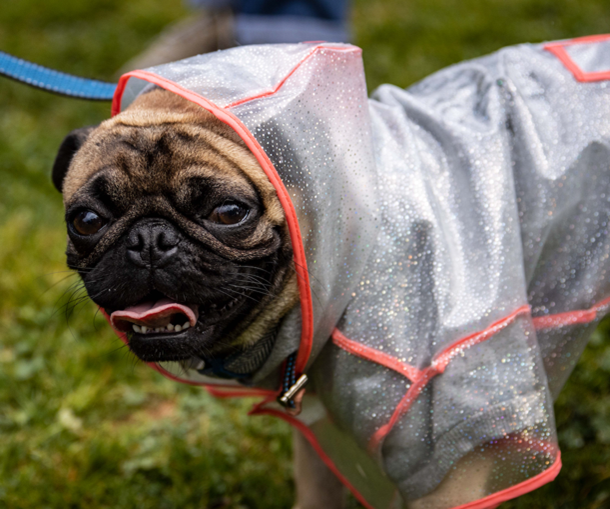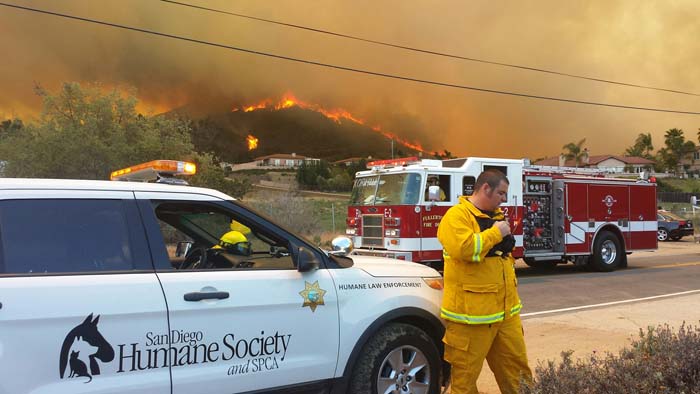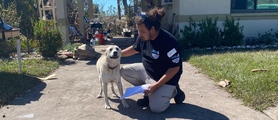Animal People:
Ayeshah Al-Humaidhi and John Peaveler
Animal Rescuers
Ayeshah Al-Humaidhi and John Peaveler formed a bond working long days in the hot Kuwaiti desert to build the country’s first animal shelter. Many years of dust, sweat and tears led to a beautiful family and two impactful careers in animal welfare. Ayeshah, now the senior director of animal welfare at San Diego Humane Society, and John, the Humane Law Enforcement lieutenant overseeing our Emergency Response Team, told us how their shared passion for animals has driven purposeful lives in our Animal People interview.
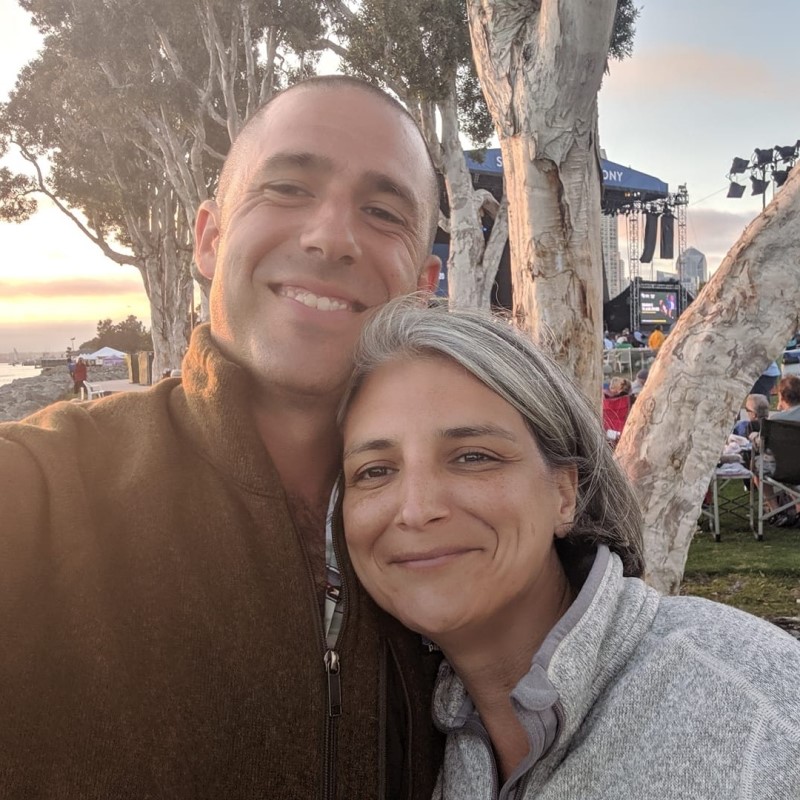
Ayeshah, how did you first get started in animal welfare?
A: The joke I always tell is that I entered animal welfare kicking and screaming — it was never my intention. When I moved to the U.S. from Kuwait to go to college, I got a dog and I basically did everything wrong. I got a dog out of a newspaper from a backyard breeder and the dog was a physical and psychological wreck. To this day, he had the worst separation anxiety I’ve ever seen. I ended up working with trainers to try to deal with a lot of his behavior, but he was born with multiple heart defects and passed away when he was only 16 months old.
Then, I adopted a dog from the local shelter who turned out to also have significant behavioral challenges. I started working with trainers to try to deal with very different problem behaviors. He was probably 12 or 13 years old and ended up going into kidney failure and passing. I was devastated. I lost two dogs back to back and just didn't have it in me at that point to get another dog. I couldn't fathom the loss.
One of the trainers I was working with said, “You clearly have a gift with these animals. Why don’t you use that and volunteer at a shelter?” That had never crossed my mind because that wasn’t a world I was raised in. But I decided to try it out and became that crazy volunteer who went every single day. I worked at multiple shelters in the Pittsburgh area and helped develop programs with them. That's really how I entered into animal welfare — I stumbled in and fell over my feet a couple times, and landed face first into an animal shelter.
Did you plan to work with animals when you returned home?
A: When I graduated with my master’s degree and went back to Kuwait, I had no intention of making animal welfare my career. I was planning to work for the Foreign Service in Kuwait and in development for women through Islam. Things did not go as expected, and one day a dog ran up to me when I was walking my dog. I picked him up and said, “I guess this is what we’re doing.” I never thought of giving up on my dogs, and that’s the animal welfare mindset. Even when my first dog ate holes in my floor, my walls and my car, I wasn’t going to give up.
J: It’s stubbornness.
A: I am stubborn!
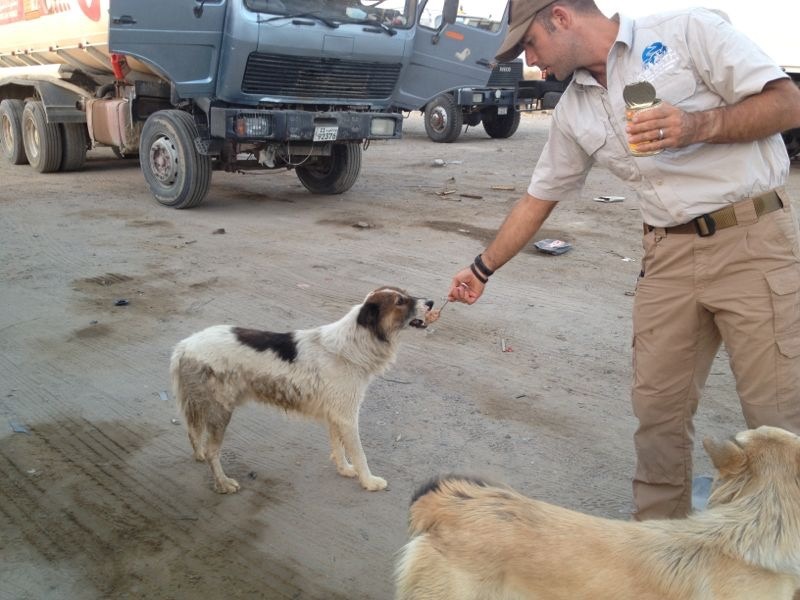
What brought you overseas to Kuwait, John?
J: I was a contractor for the U.S. military, doing the same job I did during my four years of service. A couple months into being in Kuwait, I found a litter of puppies in a dump in the middle of the desert. I sort of adopted one of them and I brought the dog to Montana, where I was planning on going to school later. After the first dog, I started to rescue more dogs. A few feral dogs gave birth near my workplace, and I ended up caring for 18 dogs in an abandoned building. I sort of started a shelter with no plan at all. I built fencing out of bomb blast barriers and could barely get enough food to feed them. I was discovered and told by work that I had 48 hours to get the dogs out of the area.
I had already met Ayeshah through a mutual friend and heard she was starting a shelter and reached out to her. We put about half the dogs in her family’s home and put the rest in an abandoned building next to the shelter construction site. We just went from there.
A: It was summer and my family was all abroad, so they didn’t know.
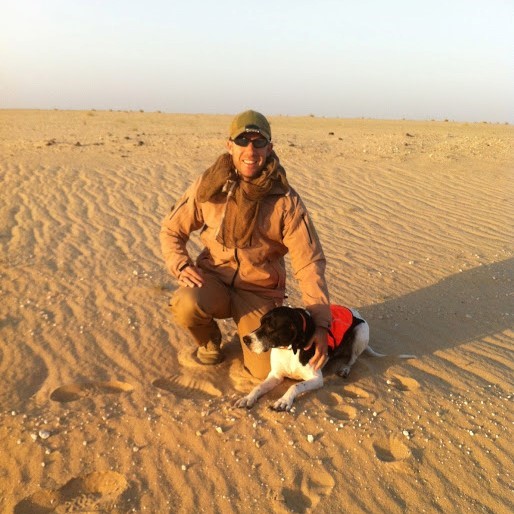
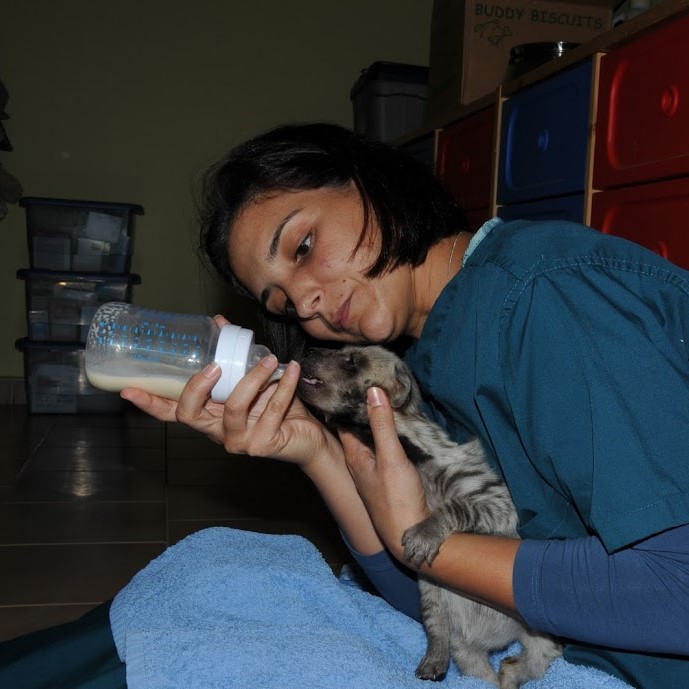
What were some of your early experiences as you built the shelter?
A: Upon my return to Kuwait in 2004, it was obvious that there was a huge gap in basic understand of animals. There were a lot of fears that surrounded dogs especially and a lot of misunderstanding coming out of the religion. I didn’t have a really good plan.
J: Keep in mind, this was a country with no animal laws. The only animal control mechanism was throwing poison indiscriminately on the street. The veterinary hospitals at the time were very basic with old medical practices. Animal welfare was nonexistent.
A: We built this shelter and it very quickly grew into something much bigger than I had ever imagined or even really understood. Because there were no resources for animals, it didn’t stop with dogs and cats. We started to get everything under the sun — wildlife, birds of prey, farm animals, monkeys and primates, you name it. It grew very quickly into a life force of its own. A species would show up and we’d do research and build whatever that animal needed for their habitat. John did a lot of the building and we learned along the way. It was far busier than we ever imagined with a huge variety of species.
John, you had originally intended to go back to the states. What made you stay in Kuwait?
J: I did the daily care for animals before my day job. There was a lot of work to do, and then love. Ayeshah and I worked very closely together and eventually got engaged. I lived at the shelter because we couldn’t afford staff. There was a lot of sweat; it was a hot place at 130 degrees plus. You do most of your work at night in the desert.
A: It wasn’t blood, sweat and tears; it was dust, sweat and tears.
What was the work like early on?
J: We were both hyper-invested in this work and there’s not a lot of people willing or able to work in that environment. There was no infrastructure at all and it’s so hard to fathom being at a place like San Diego Humane Society now with so many resources from an environment where there was nothing for animals. You could go to the market any day of the week and see suffering on a scale that was unimaginable.
A: Live animal markets were healthy and thriving.
J: You could buy fighting dogs at the public market, which is hard to imagine for some. We just became very invested in this. It was very visceral and very real and the results were very tangible. I’m not sure if I’d say the work is rewarding, because it definitely takes a serious toll, but you can see the impact of your work in the moment a lot of the time.
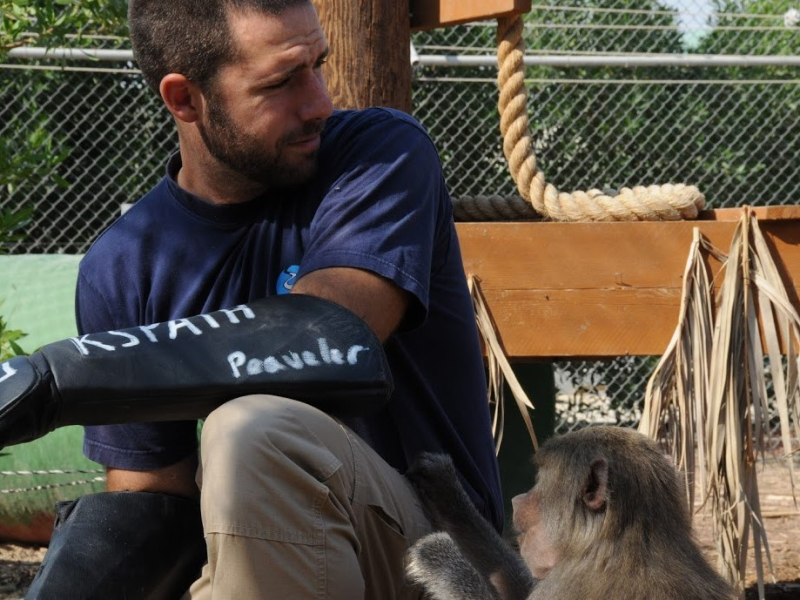
Was the local community open to change as you created all of these resources for animals?
J: I think it’s like our motto at SDHS. You can really inspire change in people by demonstrating compassion. You can’t tell people how they need to feel or how to treat animals. Laws couldn’t change the way a society thinks. We gave animals value by showing that they had value through education and small acts of compassion.
A: I saw qualitative changes in the 10 years that John and I worked in Kuwait. It was tremendous amounts of change. When I moved back in 2004 with all of my adopted dogs, my family could not wrap their heads around what was wrong with me and that I was working with animals. They thought I sold dogs and couldn’t figure out why I was rescuing them without making any money. By the time we moved back to the U.S. in 2015, all but one of my aunts had dogs — in their homes! They were saying things to me like, “When Fido dies, I don’t know what I am going to do.” This change happened even in the older generations of my traditional Kuwaiti family.
When we started, there were no pet stores, veterinarians barely knew how to do spays and neuters and mainly treated livestock. By the time we left, there were pet shops, grooming shops, training centers, pet hotels — an entire industry that blew up to something quite amazing. It’s all because there was a demand for care for pets.
My goal was not to get people to love animals, but to respect them. We got people to think about animals differently. These are sentient beings, they are creatures of God, and there’s no reason to hurt them. By the time we left, there were multiple shelters and rescues.
J: Don’t give us all of the credit, but it was a lot of work.
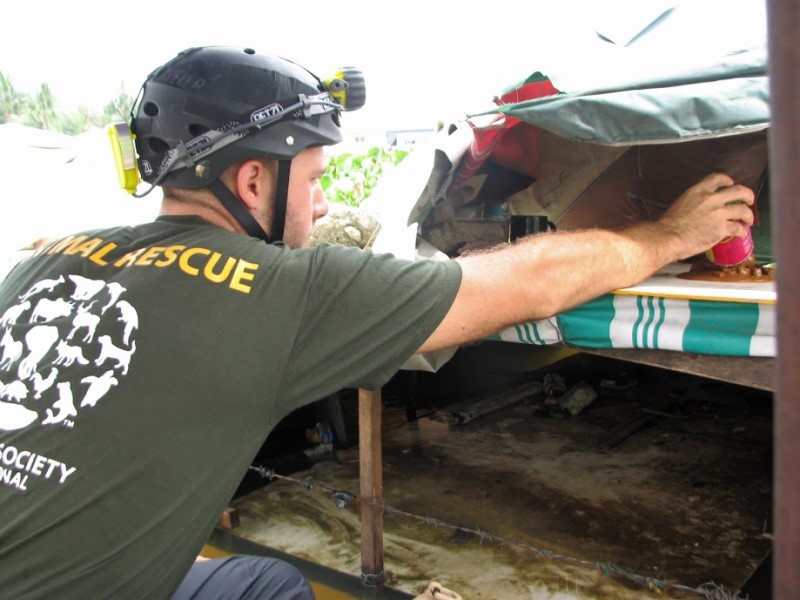
After many years of hard work, what does it mean to still be working together in animal welfare?
A: We have a mission-driven marriage. I know one of the reasons we were successful in Kuwait was because we had each other. We were partners, not just in life, but in this very, very difficult project. It was 10 brutal and tough years, but we loved it and we loved working together. We are one of those really strange couples that works really well together and we worked together side by side every day.
When we first moved to the U.S., we were in Vermont working for different organizations and we really missed that time together. It was very exciting to be able to come to San Diego Humane Society and both work for the same organization, although we don’t work very much together. At the end of the day, our shared values and vision and passion are some of the things that drive our marriage and family. We couldn’t be so committed or hyper-focused if we weren’t equally invested in this work.
One of the reasons that both John and I have survived in this industry is that we have each other and a really deep understanding of what it’s like to do this work. We approach each other with a lot of compassion. And our children understand because that's their life — they've grown up this way. We make sacrifices as a family for this work and that's just the premise that our family is built on.
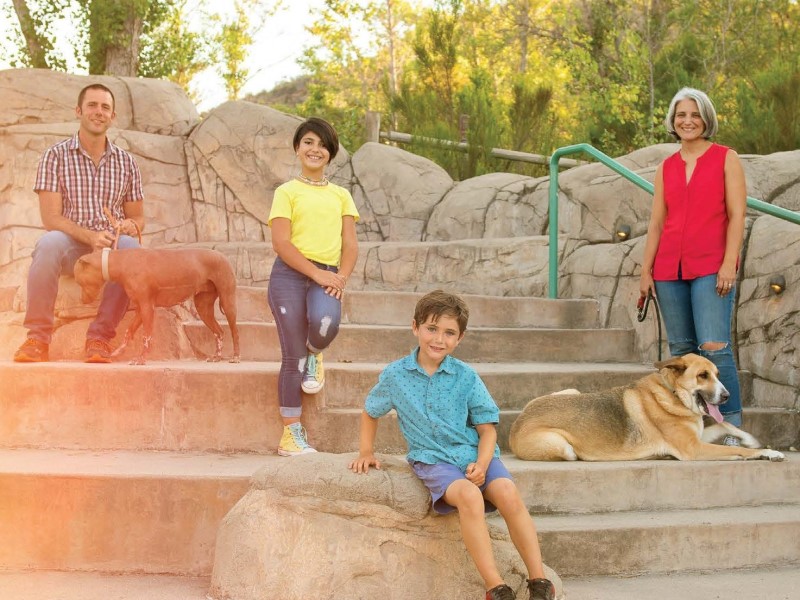
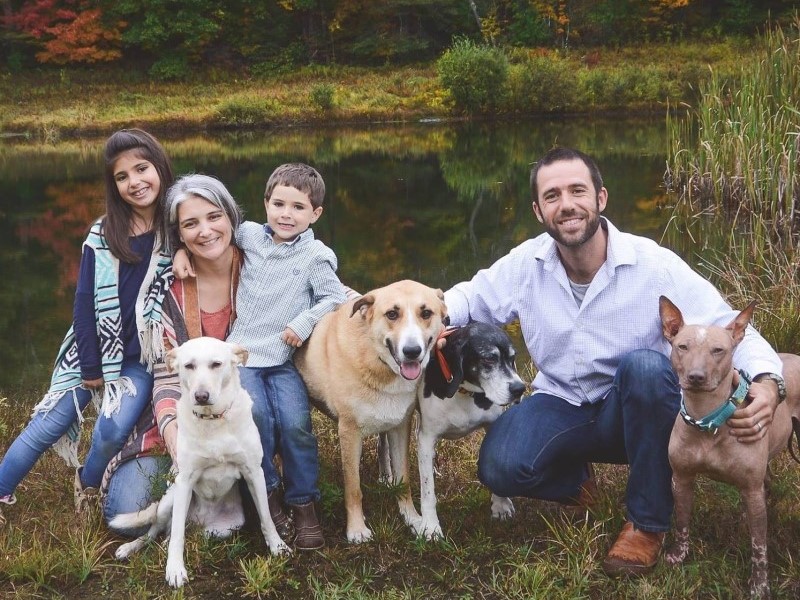
What is the biggest thing you try to impress upon your children about animals?
A: A lot of the language around the raising of children today is raising successful children, and I question what that means. Does it mean having a lot of money? For us, it’s really about raising good global citizens who don’t just have a deep respect and compassion for animals, but for everyone and everything around them. We want them to give back and find purpose that is of benefit to our society and our world. We were big travelers and one of the main reasons is because we love to see different parts of the world and interact with different cultures. We want the kids to understand that they have it good and understand that people have different stories. We want them to be humble in their daily interactions.
J: Being animal people hasn’t been easy and isn’t for everybody. We’re just trying to raise good humans who understand the global issues that intertwine and connect, whether it’s social justice or animal welfare. It’s all tied into global citizenship.
…
John is about to embark on a new venture with Greater Good charities to help with community cat populations in Hawaii, leaving his full-time job with San Diego Humane Society. He’ll continue to be part of our family though!
Published: July 12, 2021



